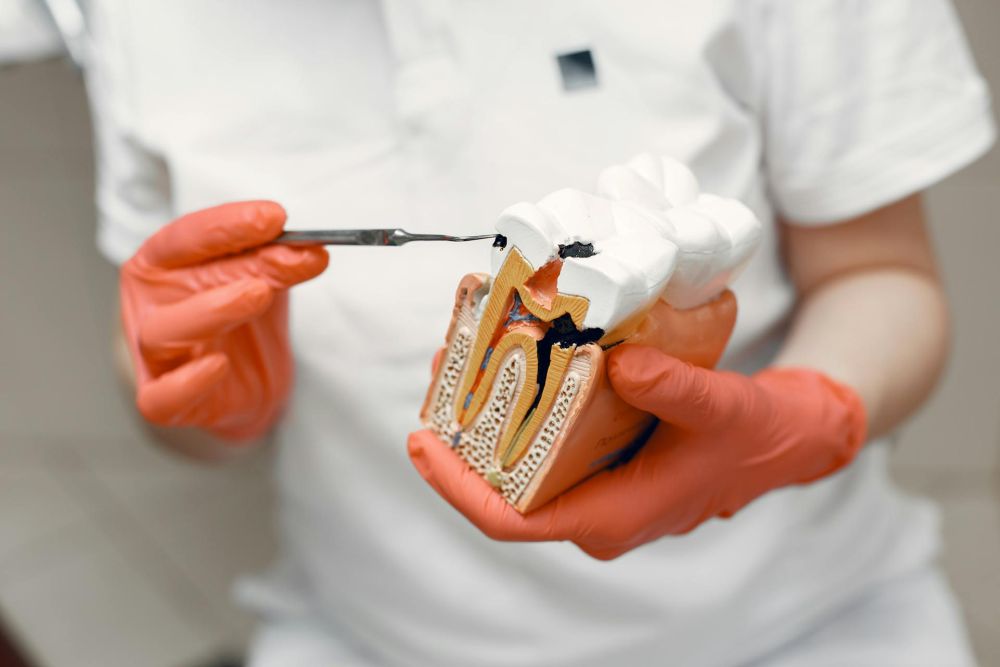
[Image above] Stress is a common response to difficult situations, but prolonged bouts can lead to serious health issues. Devices for measuring stress-related hormones at home could help people better understand their stress levels and take steps to manage it. Credit: Ciphr, Flickr (CC BY 2.0)
With Labor Day weekend now past, many people can expect several months with little to no breaks until the late fall and winter holidays kick in. The anticipated weeks-long toil, in addition to shorter days with less sunlight, can make this time of year very stressful for some people.
Though stress itself is not considered an illness, prolonged bouts of stress can lead to a range of physical and mental responses that culminate in serious health issues, such as depression and high blood pressure. So, being aware of your stress levels and taking steps to reduce stress is important for long-term health.
Unfortunately, it can be difficult to objectively determine our stress levels when we’re already feeling overwhelmed. But luckily, science is on our side. The production of several hormones in the body are affected by stress. By measuring the levels of these hormones, we can quantitatively assess our stress levels.
The steroid hormone cortisol is commonly used to assess stress levels. This hormone, along with insulin, helps regulate your blood sugar (glucose) levels. When you are stressed, increased cortisol is produced and allows the body to release more glucose, which is used as fuel by the brain to process information more quickly.
The devices currently available for measuring cortisol levels rely mainly on electrochemical sensing. In this process, the electrical properties of an electrode are measured during a biochemical reaction.
Electrodes made of silver/silver chloride are typically used as the reference electrodes in these devices because they have a stable and well-known electrode potential. However, these electrodes have poor stability in extreme and fluctuating conditions, such as changing pH and temperature. As such, the devices have a short shelf life and so are difficult to produce commercially.
To overcome this stability challenge, researchers have investigated placing protective layers on the silver/silver chloride reference electrodes. In a recent study, researchers from Xi’an Jiaotong-Liverpool University (China) and Abertay University (U.K.) described the potential of using iridium oxide as a protective layer.
Iridium oxide is a well-established material in the chemical sensing world. In addition to being used as a stable pH sensor, iridium oxide also has been used to detect glucose, hydrogen peroxide, glutamate, and organophosphate pesticides, among other substances.
In the new study, the researchers covered the silver/silver chloride reference electrodes with iridium oxide nanoparticles using electrodeposition. They then tested and compared the coated electrodes’ performance to uncoated electrodes.
In addition to being more stable against environmental stimuli, the coated electrodes showed ultrasensitivity to cortisol. Specifically, the device detected cortisol molecules at a concentration 3,000 times lower than the normal range of cortisol in human blood, which “makes our device sensitive enough for commercial use,” says coauthor Qiuchen Dong, assistant professor at Xi’an Jiaotong-Liverpool University, in a press release.
Another benefit of the coated electrodes was that they demonstrated good selectivity between different types of hormones.
“One problem with the current solutions is that there is much similarity between cortisol and other hormones such as progesterone, testosterone, and corticosterone. This [similarity] means it is difficult for the detectors to tell them apart,” says Graham Dawson, associate professor at Xi’an Jiaotong-Liverpool University, in the press release. “Our iridium oxide-modified electrode is selective enough to distinguish the different hormones and helps solve this issue.”
In the future, the development and commercialization of long-lasting cortisol detectors could revolutionize point-of-care testing. At-home cortisol tests exist, but the samples must be mailed back to a lab for analysis. If the test kits included cortisol detectors, then everything from sample collection to analysis could be done at home—thus helping lower barriers to personalized, affordable health care.
The paper, published in Talanta, is “Iridium oxide-modified reference screen-printed electrodes for point-of-care portable electrochemical cortisol detection” (DOI: 10.1016/j.talanta.2024.126776).
Author
Lisa McDonald
CTT Categories
- Biomaterials & Medical


